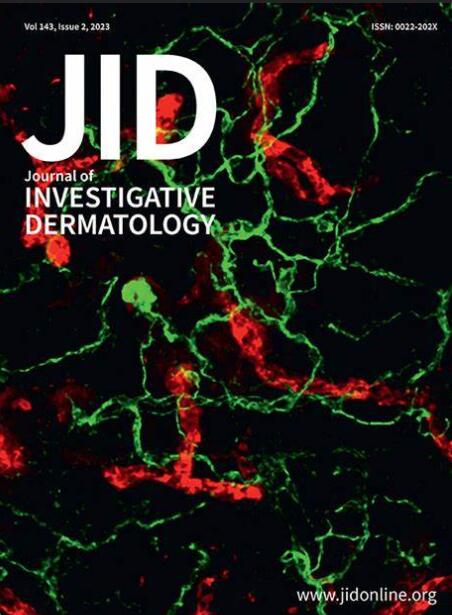刺猬驱动的毛囊新生需要真皮β-Catenin
IF 5.7
2区 医学
Q1 DERMATOLOGY
引用次数: 0
摘要
小鼠大面积皮肤切除后会出现毛囊新生(HFN),这是哺乳动物伤口愈合中一种罕见的再生模型。小鼠和人类的伤口愈合通常会导致纤维化。我们以前的研究表明,小鼠小面积皮肤切除后会形成没有 HFN 的瘢痕,显示出非再生性愈合的特征,而这种伤口真皮层中的刺猬(Hh)激活可诱导 HFN。在本研究中,我们试图验证真皮Wnt/β-catenin信号在HFN中的作用,因为这一通路对HF的发育至关重要,但在成人伤口的纤维化中也有很好的表现。通过删除大伤口肌成纤维细胞中的β-catenin,我们发现Wnt/β-catenin信号转导是高频营养不良的内生机制所必需的。通过利用同时诱导肌成纤维细胞中β-catenin缺失和Smoothened(Smo)组成性激活的联合小鼠模型,我们还发现β-catenin是Hh驱动的DP形成所必需的。转录组分析证实,Wnt/β-catenin 和 Hh 通路在真皮乳头(DP)细胞中被激活。我们的研究结果表明,Wnt激活的纤维化状态也可能会为Hh的再生功能创造一个许可状态,这表明在未来促进HFN的策略中必须确保皮肤伤口成纤维细胞中Wnt和Hh通路的激活。本文章由计算机程序翻译,如有差异,请以英文原文为准。
Dermal β-Catenin Is Required for Hedgehog-Driven Hair Follicle Neogenesis
Hair follicle neogenesis (HFN) occurs after large skin excisions in mice, serving as a rare regenerative model in mammalian wound healing. Wound healing typically results in fibrosis in mice and humans. We previously showed that small skin excisions in mice result in scarring devoid of HFN, displaying features of nonregenerative healing, and hedgehog (Hh) activation in the dermis of such wounds can induce HFN. In this study, we sought to verify the role of dermal Wnt/β-catenin signaling in HFN because this pathway is essential for hair follicle development but is also paradoxically well-characterized in fibrosis of adult wounds. By deletion of β-catenin in large wound myofibroblasts, we show that Wnt/β-catenin signaling is required for endogenous mechanisms of HFN. By utilizing a combined mouse model that simultaneously induces deletion of β-catenin and constitutive activation of Smoothened in myofibroblasts, we also found that β-catenin is required for Hh-driven dermal papilla formation. Transcriptome analysis confirms that Wnt/β-catenin and Hh pathways are activated in dermal papilla cells. Our results indicate that Wnt-active fibrotic status may also create a permissive state for the regenerative function of Hh, suggesting that activation of both Wnt and Hh pathways in skin wound fibroblasts must be ensured in future strategies to promote HFN.
求助全文
通过发布文献求助,成功后即可免费获取论文全文。
去求助
来源期刊
CiteScore
8.70
自引率
4.60%
发文量
1610
审稿时长
2 months
期刊介绍:
Journal of Investigative Dermatology (JID) publishes reports describing original research on all aspects of cutaneous biology and skin disease. Topics include biochemistry, biophysics, carcinogenesis, cell regulation, clinical research, development, embryology, epidemiology and other population-based research, extracellular matrix, genetics, immunology, melanocyte biology, microbiology, molecular and cell biology, pathology, percutaneous absorption, pharmacology, photobiology, physiology, skin structure, and wound healing

 求助内容:
求助内容: 应助结果提醒方式:
应助结果提醒方式:


